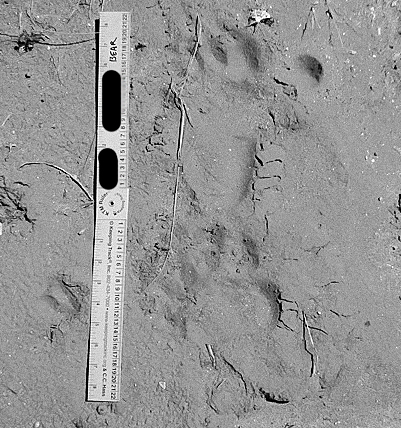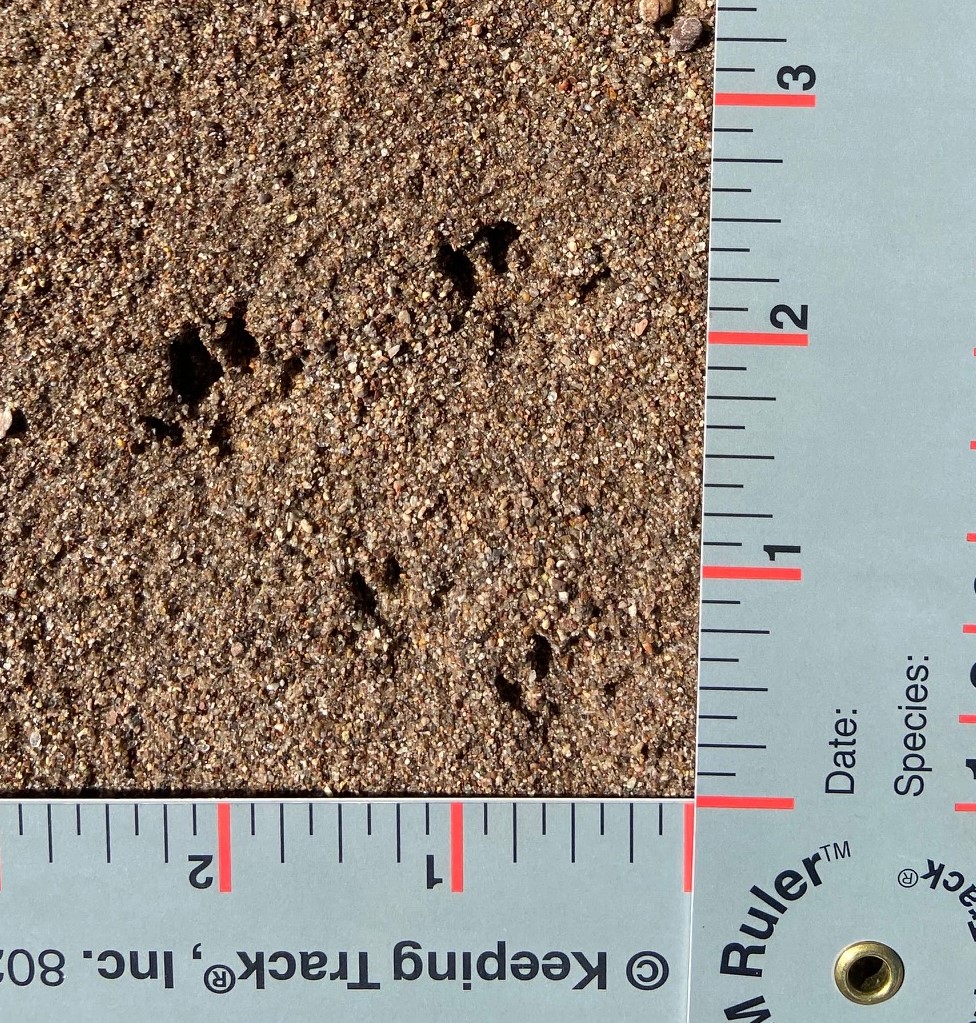To start off Citizen Science Month, Sharman Apt Russell takes us into the arroyos of southwestern New Mexico where she has been helping monitor wildlife. The tracks of mountain lions are common and easy to identify, but the tracks of the endangered meadow jumping mouse are rare. Would she recognize them if she saw them? How would she know for certain?
* * * * * *
The meadow jumping mouse has a saltatorial superpower: it’s able to leap ten times the length of its body, up to three feet. These animals are also good swimmers. And diggers. And sleepers. In some areas, they hibernate ten months of the year. In 2014, a New Mexican subspecies was listed as federally endangered, and that’s how I got to know these mice, study their footprints, and learn the word “saltatorial” (adapted for leaping).
![]()
Sharman Apt Russell (center, wearing the rainbow hat) at a tracking workshop
As part of a citizen science team in southwestern New Mexico, I help monitor the presence of  keystone predators like mountain lion, black bear, bobcat, and white-nosed coati. Every few months, for seven years, this team has walked up and down the same sandy arroyo looking for tracks, scat, scrapes, and kill sites. When we find something—“Mountain lion! Over here!”--we measure and photograph and send that information to a conservation group that puts it into a national database. Years of such tracking has helped environmentalists negotiate freeway underpasses and overpasses for wildlife, as well as other protections. My citizen science team also watches for signs of endangered species like the jaguar, Mexican gray wolf, and—now—the big-eyed, pointy-nosed, long-tailed, multi-talented meadow jumping mouse.
keystone predators like mountain lion, black bear, bobcat, and white-nosed coati. Every few months, for seven years, this team has walked up and down the same sandy arroyo looking for tracks, scat, scrapes, and kill sites. When we find something—“Mountain lion! Over here!”--we measure and photograph and send that information to a conservation group that puts it into a national database. Years of such tracking has helped environmentalists negotiate freeway underpasses and overpasses for wildlife, as well as other protections. My citizen science team also watches for signs of endangered species like the jaguar, Mexican gray wolf, and—now—the big-eyed, pointy-nosed, long-tailed, multi-talented meadow jumping mouse.
Photo at right: bear tracks
Photo below, left: mouse tracks (unknown species)

But how well would we recognize the tracks of a jumping mouse? And how to distinguish them from other mice in our transect area? A few weeks ago, some friends and I had a go-round.
“So this track is about 3/8" long, with five toes not connected to the palm pad, with Toe 1 pointed to the side, Toes 2, 3, and 4 pointing up, and Toe 5 to the side. I think it’s a harvest mouse.”
“I was sure I put my reading glasses in my pack.”
“See how Toe 5 is really set back, almost at a 90-degree angle from the pad?”
“I’m not sure that’s a toe.”
“Harvest mice have slightly bulbous toes. I don’t think these are bulbous.”
“I love the mumbly sound of bulbous.”
“These toes are pretty thin.”
“The toes of the endangered meadow jumping mouse are thin.”
“Could this be the front foot of an endangered jumping mouse?”
Silence.
“Well, long-tailed voles also have thin toes.”
“It’s the long hind feet of the jumping mouse that are so distinctive.”
“I don’t think it’s a vole. Definitely not a harvest mouse.”
We do what we are trained to do, take a photo with a ruler next to the track for scale and send that into the experts. In the next hour, we’ll come across the rear right footprint of a mountain lion, a shape we know very well. Mountains lion are not uncommon, if still wondrous. Today we feel a little ho-hum about the mountain lion. Maybe we just saw the track of a jumping mouse!
 squirrel tracks (unknown species)
squirrel tracks (unknown species)
Author’s note: This citizen science team tracks for Sky Island Alliance, at www.skyislandalliance.org.
The scene and conversation described is only slightly made-up, as any tracker of wild mice will know.
Sharman Apt Russell is the author of Diary of a Citizen Scientist: Chasing Tiger Beetles and Other New Ways of Engaging the World
